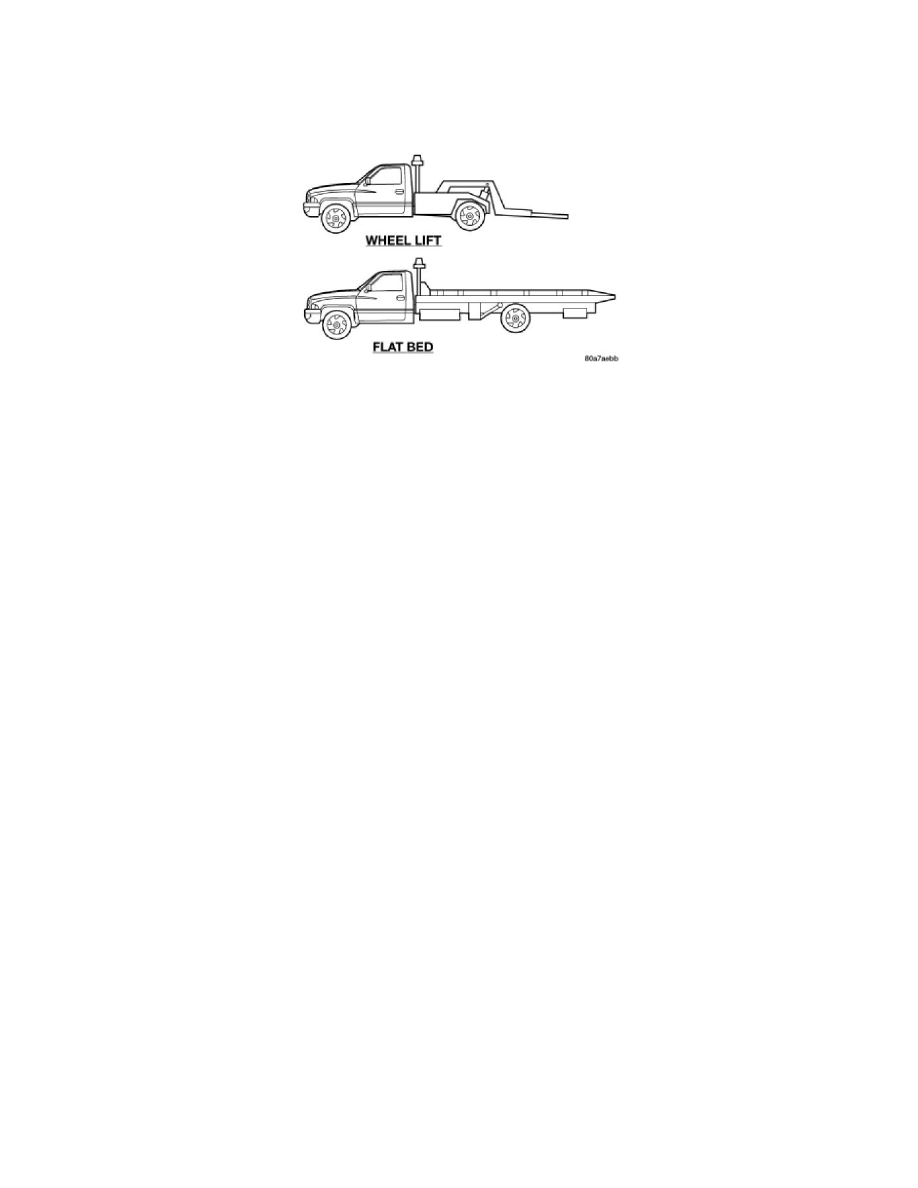Liberty 2WD V6-3.7L (2008)

Towing Information: Service and Repair
Towing
STANDARD PROCEDURE
A vehicle equipped with SAE approved wheel lift-type towing equipment can be used to tow Jeep vehicles. When towing a 4WD vehicle using a
wheel-lift towing device, use tow dollies under the opposite end of the vehicle. A vehicle with flatbed device can also be used to transport a disabled
vehicle.
SAFETY PRECAUTIONS
CAUTION: The following safety precautions must be observed when towing a vehicle:
-
Secure loose and protruding parts.
-
Always use a safety chain system that is independent of the lifting and towing equipment.
-
Do not allow towing equipment to contact the disabled vehicle's fuel tank.
-
Do not allow anyone under the disabled vehicle while it is lifted by the towing device.
-
Do not allow passengers to ride in a vehicle being towed.
-
Always observe state and local laws regarding towing regulations.
-
Do not tow a vehicle in a manner that could jeopardize the safety of the operator, pedestrians or other motorists.
-
Do not attach tow chains, T-hooks, or J-hooks to a bumper, steering linkage, drive shafts or a non-reinforced frame hole.
-
Do not tow a heavily loaded vehicle. Use a flatbed device to transport a loaded vehicle.
TWO-WHEEL - DRIVE VEHICLE TOWING
DaimlerChrysler Corporation recommends that a vehicle be towed with the rear end lifted, whenever possible.
WARNING: When towing a disabled vehicle and the drive wheels are secured in a wheel lift or tow dollies, ensure the transmission is in the
park position (automatic transmission) or a forward drive gear (manual transmission).
WARNING: Ensure vehicle is on a level surface or the wheels are blocked to prevent vehicle from rolling.
TWO WHEEL DRIVE TOWING - REAR END LIFTED
CAUTION: Do not use steering column lock to secure steering wheel during towing operation.
Provided that the transmission is operable, tow with the transmission in N (Neutral) and the ignition key in the OFF position along with the front wheels
raised and the rear wheels on the ground. The speed must not exceed 30 mph (50 km/h) and the distance must not exceed 15 miles (25 km).
If the vehicle is to be towed more than 15 miles (25 km ) or faster than 30 mph, it must be towed on a flatbed, or with the rear wheels raised and the front
wheels on the ground, or with the front end raised and the rear wheels on a towing dolly.
1. Attach wheel lift device to rear wheels.
2. Place the transmission in neutral.
3. Raise vehicle to towing position.
4. Attach safety chains. Route chains so not to interfere with tail pipe when vehicle is lifted.
CAUTION: Do not use steering column lock to secure steering wheel during towing operation.
5. Secure steering wheel in straight ahead position with a clamp device designed for towing.
